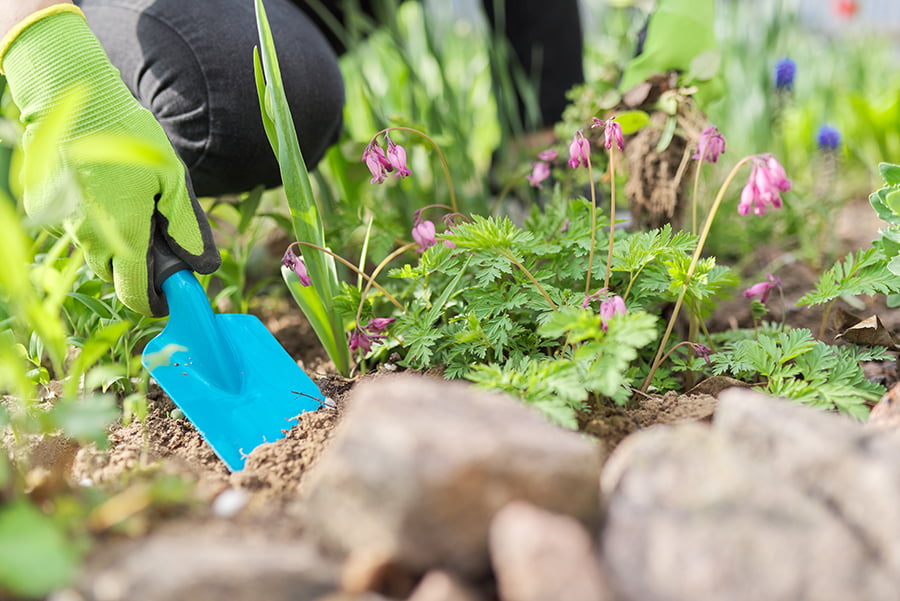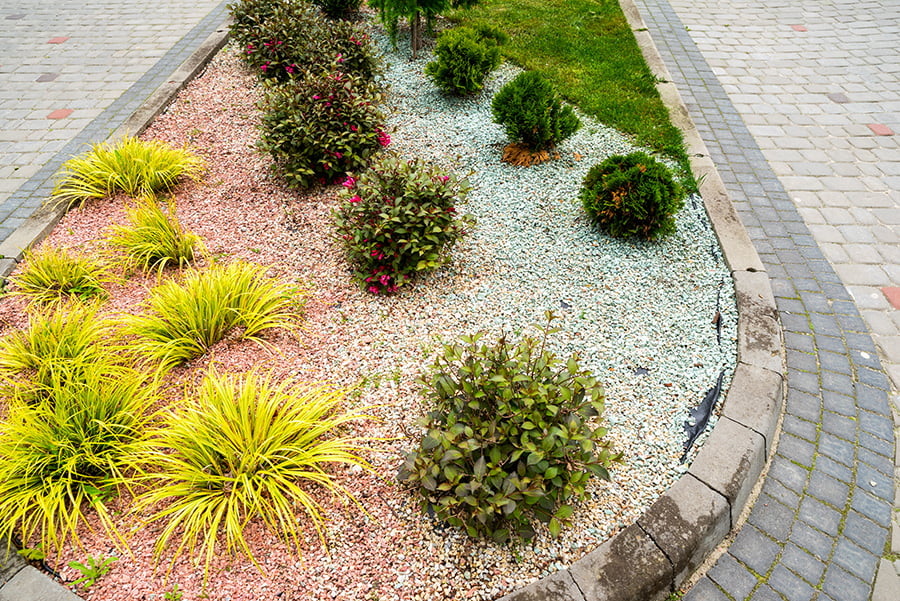Xeriscaping is a type of landscaping that uses drought-tolerant plants and water-conserving techniques to reduce the need for supplemental water.
To incorporate xeriscaping into your landscaping design, you can use native plants, group plants with similar water needs together, and create hardscapes such as gravel or mulch to minimize evaporation.
Xeriscaping is a form of sustainable landscaping that uses native plants and water-conserving strategies to create a beautiful, low-maintenance landscape. It is an environmentally friendly way to reduce your water usage while still creating a stunning outdoor space.
In this blog post, we’ll discuss the basics of xeriscaping and how you can incorporate it into your landscaping design. We’ll cover topics such as selecting drought-tolerant plants, using mulch to retain moisture, and other ways to make your yard more efficient with water use.
By the end of this post, you will have all the tools you need for creating a gorgeous xeriscaped space!
Look Inside:
Definition of Xeriscaping

It is an environmentally friendly way to conserve water, reduce maintenance costs, and create beautiful landscapes.
Xeriscaping involves selecting plants that are adapted to the local climate and soil conditions, grouping them together in areas with similar water needs, using mulch or ground covers to retain moisture in the soil, and incorporating efficient irrigation systems such as drip or soaker hoses.
Xeriscaping can include hardscapes such as patios or pathways made from permeable materials like gravel or pavers which allow rainwater to soak into the ground rather than run off into storm drains.
By following these principles of xeriscaping you can create a low-maintenance landscape that looks great while conserving precious resources!
Benefits of Xeriscaping

It is an environmentally friendly way to conserve water, reduce maintenance costs, and create beautiful landscapes. The main benefits of xeriscaping are that it can save money on water bills, reduce the amount of time spent maintaining your landscape, and provide a more sustainable environment.
By using drought-tolerant plants in your design, you can significantly reduce the amount of water needed for your landscape. This means less time spent watering and less money spent on expensive irrigation systems or additional watering equipment.
These plants require little maintenance once established so you won’t have to spend as much time weeding or pruning them. Xeriscaping also helps protect local ecosystems by reducing runoff from over-watering which can lead to soil erosion and pollution in nearby bodies of water such as rivers or lakes.
By using native plants in your design you will be helping support local wildlife by providing food sources for birds and insects while also creating habitats for beneficial species like pollinators like bees or butterflies.
Xeriscaping provides aesthetic benefits with its unique designs featuring low-maintenance succulents, cacti, grasses, shrubs and trees that are adapted to survive in dry climates without supplemental irrigation.
With careful planning you can create a beautiful landscape that requires minimal effort while still being able to enjoy all the benefits associated with xeriscaping!
Principles of Xeriscaping

It is based on the idea of using native, drought-tolerant plants in order to reduce the need for supplemental irrigation. The seven principles of xeriscaping are planning and design, soil analysis and improvement, efficient irrigation, use of mulch, selection of appropriate plants, turf areas management and maintenance.
Planning and design involves creating a landscape plan that takes into account the local climate conditions as well as the site’s topography. Soil analysis helps determine what types of amendments may be needed to improve drainage or increase water retention capacity.
Efficient irrigation systems should be used to ensure that only necessary amounts of water are applied at specific times when it will be most beneficial for plant growth. Mulch can help retain moisture in soil while also reducing weeds and erosion.
Appropriate plant selection includes choosing species that are adapted to local climate conditions such as temperature extremes or low rainfall levels. Turf areas should be managed with practices such as mowing heights adjusted according to season or using drought tolerant grasses instead of traditional lawn grasses like Kentucky bluegrass which require more frequent watering cycles than other varieties do.
Regular maintenance including monitoring soil moisture levels can help keep landscapes healthy while conserving resources like water over time.
Plant Selection for Xeriscaping

Plant selection for xeriscaping is an important part of the design process, as it will determine how much water your landscape needs in order to remain healthy and attractive. When selecting plants for xeriscaping, you should consider their water requirements, as well as their ability to withstand drought conditions.
You should also look at the size and shape of the plant when deciding which ones to use in your design. You may want to choose native plants or those that are adapted to local climate conditions since they will be more likely to survive with less water than non-native species.
Consider adding mulch around your plants in order to help retain moisture and reduce evaporation from the soil surface. By carefully selecting appropriate plants for xeriscaping, you can create a beautiful landscape while conserving precious resources like water!
Design Considerations for Incorporating Xeriscaping Into Existing Landscaping Design

Incorporating xeriscaping into an existing landscaping design can be a great way to save money on water bills while still having an attractive outdoor space. When designing a xeriscape, there are several considerations to keep in mind.
First, it’s important to choose plants that are native or adapted to the local climate and soil conditions. This will help ensure that they require minimal supplemental watering once established.
Grouping plants with similar water needs together can help conserve resources by ensuring each plant gets the right amount of moisture without over-watering any one area. Adding mulch around plants helps retain moisture in the soil and reduces evaporation from wind and sun exposure.
By taking these design considerations into account when incorporating xeriscaping into an existing landscape design, homeowners can create beautiful outdoor spaces while conserving valuable resources like water!
Maintenance Requirements for a Successful Xeriscape

To ensure a successful xeriscape, it is important to understand the maintenance requirements associated with this type of landscaping. The first step in maintaining a xeriscape is selecting drought-tolerant plants that are well suited for your climate and soil conditions.
These plants should be able to survive with minimal water and care, so research local varieties before making any purchases. Consider using mulch or ground cover around your plants to help retain moisture in the soil and reduce weed growth.
Once you have established your xeriscape, regular maintenance will be necessary to keep it looking its best. This includes weeding regularly, pruning back overgrown shrubs or trees as needed, and fertilizing once or twice per year depending on plant needs.
It’s also important to check irrigation systems periodically for leaks or clogs that could lead to wasted water usage. Make sure you are aware of any local watering restrictions so you can adjust accordingly during times of drought or other periods when outdoor watering may not be allowed.
By following these simple steps for maintaining a xeriscape landscape design, you can enjoy beautiful outdoor spaces while conserving precious resources like water!
